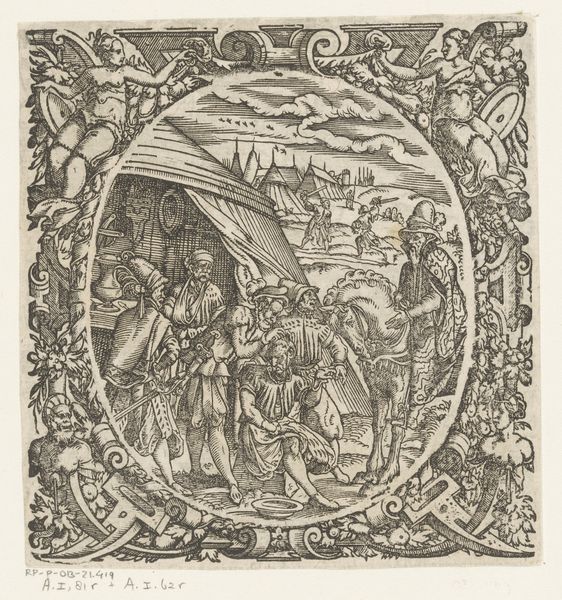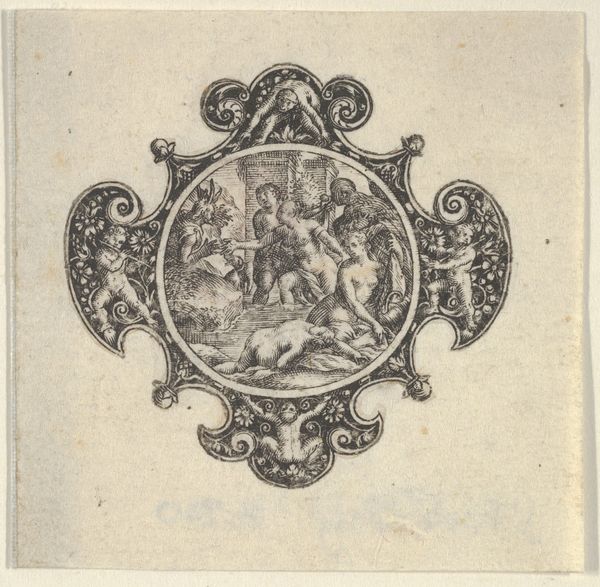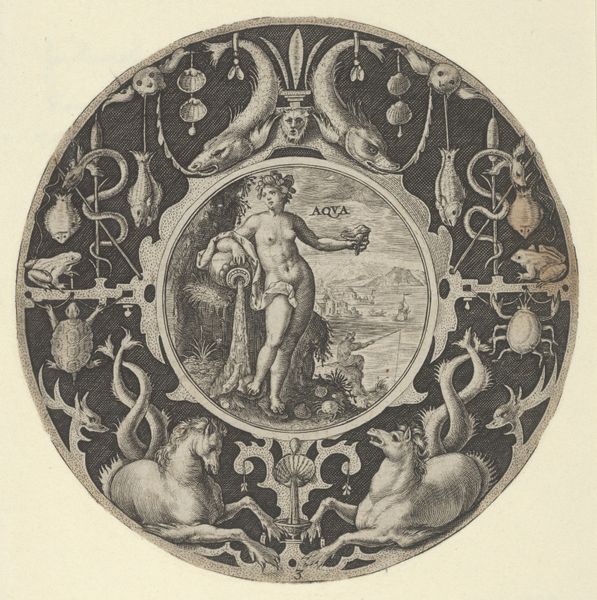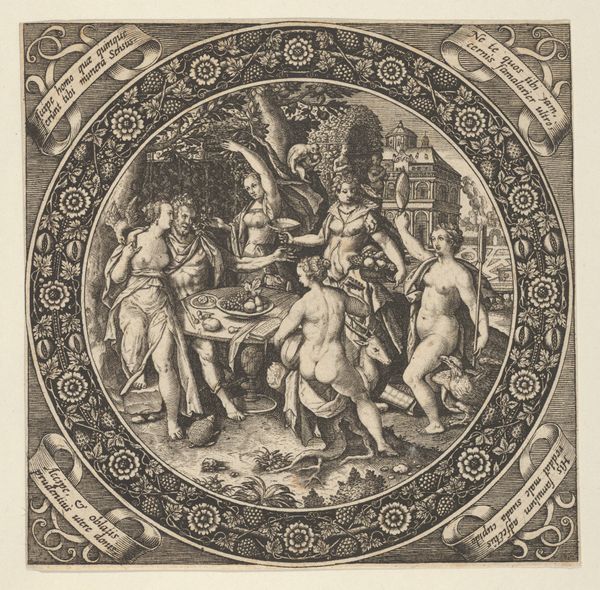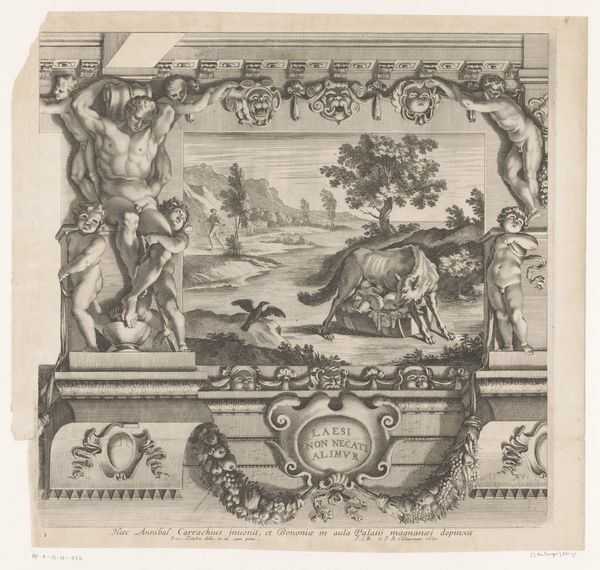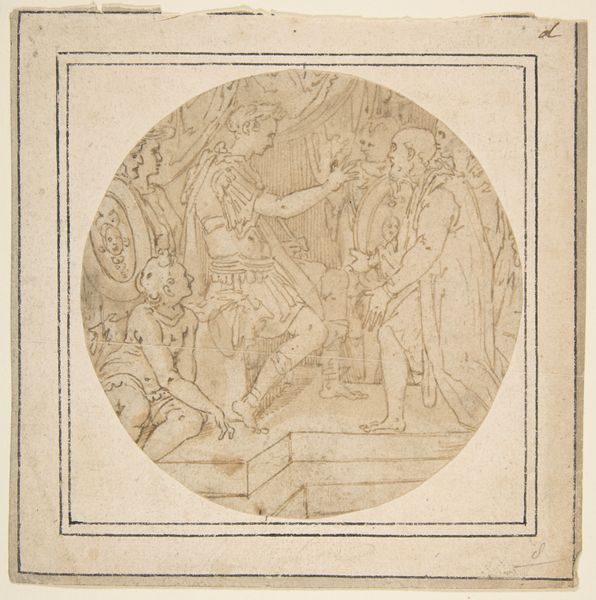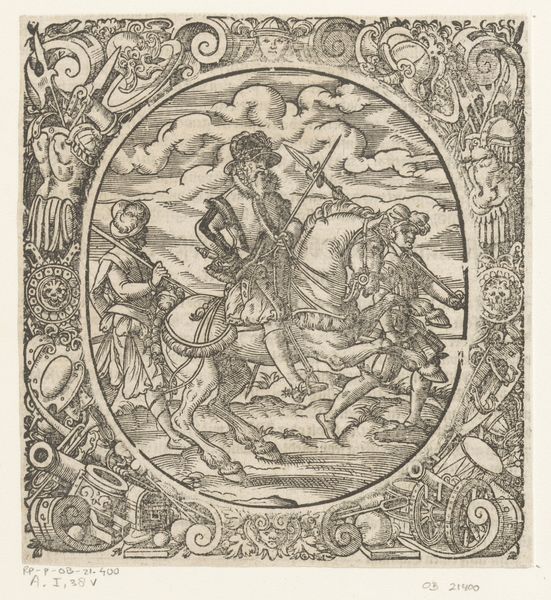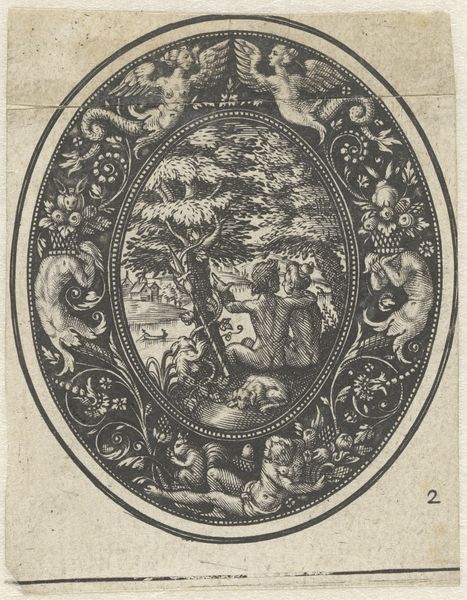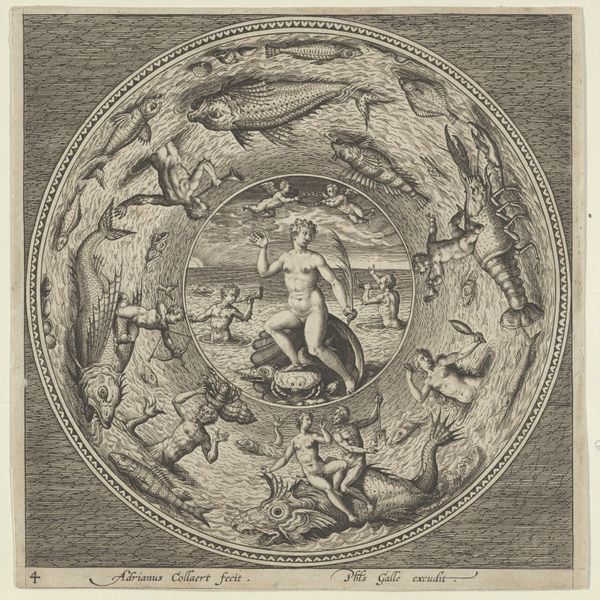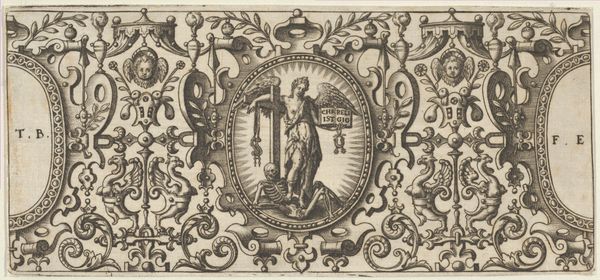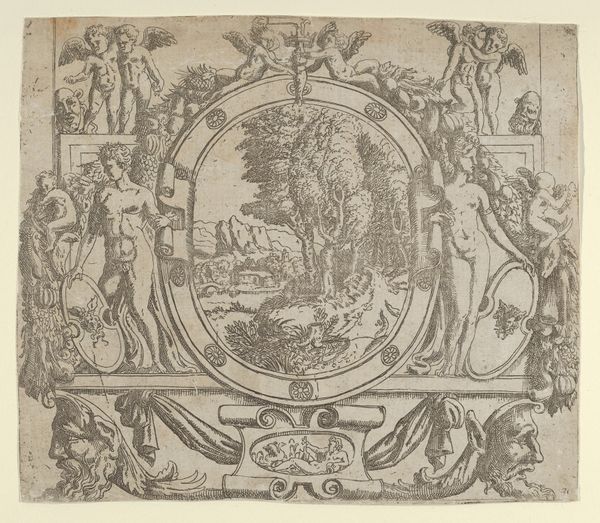
drawing, print, woodcut, engraving
#
drawing
# print
#
landscape
#
figuration
#
11_renaissance
#
woodcut
#
history-painting
#
northern-renaissance
#
engraving
#
christ
Dimensions: Sheet: 3 3/8 × 3 1/4 in. (8.5 × 8.3 cm)
Copyright: Public Domain
Curator: Standing before us is "Pacifical with Resurrection," a work attributed to Lucas Cranach the Elder, crafted sometime between 1472 and 1553. It's a woodcut, a printmaking technique quite popular in the Northern Renaissance. What’s your initial read on it? Editor: Stark. There's a raw energy here. It feels…urgent. I'm struck by the use of the circle, it creates a sense of a world within a world. All that dense imagery held within this perfect shape… Curator: That circular composition definitely resonates with its historical context. These “Pacifical” prints were frequently devotional objects—circular medals or ornaments. Cranach’s placing of the Resurrection scene inside underscores its symbolic weight within Christianity and Reformation-era debates. Editor: The imagery is striking; a powerful Christ figure is flanked by what appear to be sleeping figures. In iconography, sleep carries such rich associations. Here, do you think it signals spiritual slumber, perhaps even ignorance before awakening? Curator: Possibly. Think about the sociopolitical landscape of the time. Cranach was closely tied to the Protestant Reformation. That image of awakening might well be a direct commentary on shaking off established dogmas, inviting a more personal, informed relationship with faith. He uses familiar religious narratives to fuel a wider transformation. Editor: Yes! I am intrigued by the staff Christ carries. The symbolism in religious iconography has been debated throughout history, and here the artist wields that charged narrative to galvanize awareness about established structures of faith. Curator: Absolutely. It invites questions, urging people to actively examine their beliefs, to challenge conventional wisdom. What appears simply illustrative, on closer inspection, offers profound sociocultural critique. Editor: This really makes me rethink how even these small-scale pieces, were crucial communication tools, fostering alternative perceptions. It is really fascinating how all that rich historical material can still powerfully spark discussions today. Curator: I completely agree. It reinforces how intertwined the historical, the personal, and the political truly are in the story that these images attempt to tell.
Comments
No comments
Be the first to comment and join the conversation on the ultimate creative platform.
